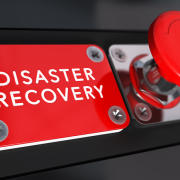Establish An Emergency Operations Center
During the past few months, we’ve been harping on emergency preparedness, and with good reason. Recent events have taught us that companies that are prepared for disasters survive; unprepared ones go out of business.
In November 2011, we wrote about IT Backup and Disaster Planning, April 2012’s article spoke about IT Security, and May 2012’s Newsletter discussed Records Management. Now, we need to bring it all together by establishing an area where you and your team will congregate during a disaster to manage the recovery process.
Depending on your company’s resources, the Emergency Operations Center (EOC) can be a fully equipped and elaborate arrangement or a basic home office setup for the small business owner. This is not a technical article rather, it is meant to get you thinking about establishing an EOC before disaster strikes to minimize disruption and to get your business back on its feet as quickly as possible.
Minimum Requirements
An EOC is the place where you and your management team go as soon as your facility becomes unusable during or after a disaster. It is from this facility that you will coordinate the recovery process. The key word is coordinate; this means that the ability to communicate to the rest of the world is of paramount importance. It goes without saying that the EOC should not be in the same facility where you work. You do not want your EOC to share the same fate as your office.
Minimally, your EOC should be equipped with:
- Phones
- High speed internet connection
- PCs and printers
- Basic office supplies
- Access to employee and customer contact records including email addresses. Preferably, these records are stored in the Cloud where you can access them from anywhere you have an internet connection.
It would be more productive if your budget allows for the procurement of workstations for every member of your team. If this is not possible, then members will have to share PC assets until they are able to move into temporary quarters.
One thing you may want to consider is to refurbish older PCs rather than scrapping them if they are still in good working order. Once a PC is taken out of circulation, it should be physically cleaned, a fresh copy of the operating system reinstalled and updated, and copies of office software installed (i.e. MS Office or the free alternative — Open Office). Minimal maintenance should be applied to ensure that they remain in good working order so they can be used immediately when needed.
Make sure you periodically test all connections and systems prior to using them in a real disaster. Phones, PCs, internet connections, and backup systems will do you no good if they do not work when you need them the most. Test them often.
Commence Recovery Operations
As soon as a disaster claims your facility, make sure that all employees have safely evacuated the premises and contact emergency authorities as necessary. You should immediately invoke your Emergency Employee Communication Plan so they’ll know when and where they will receive further instructions from management.
The management team should immediately go to the Emergency Operations Center and start Recovery Operations. This is where all of your pre-planning comes into play. From the EOC, you should contact the individuals and organizations responsible for:
- Activating your alternate physical location so employees can start servicing clients as soon-as-possible.
- Implementing your company’s IT Disaster Plan so critical systems can be switched over to Cloud services and/or physical equipment procured in preparation for server restoration. Once up and running your files, records, and critical documents should be accessible to appropriate personal.
- Ensuring that the alternate site has active internet and phone lines.
- Procuring workstations and prepping them for immediate use by your employees. Your IT department should coordinate the loading of any source programs necessary for your employees to do their jobs efficiently.
- Communicating to your customers that your pre-planning has allowed you to recover quickly from this disaster and that you’ll commence full service very soon.
- Contacting insurance providers to start financial recovery operations.
After The Disaster
After management has effectively dealt with the disaster, they should review events and responses so you can modify your plan to avoid any shortfalls in the future. Additionally, once your EOC has been evacuated and management moved to temporary facilities, the EOC should be restocked and retooled in preparation for the next disaster.
An Emergency Operations Center is something that should be an integral part of your company’s Disaster and Backup Plan. It is not a commodity; it is a necessity. Keep it in good working order so it can serve you well. Good Luck.











